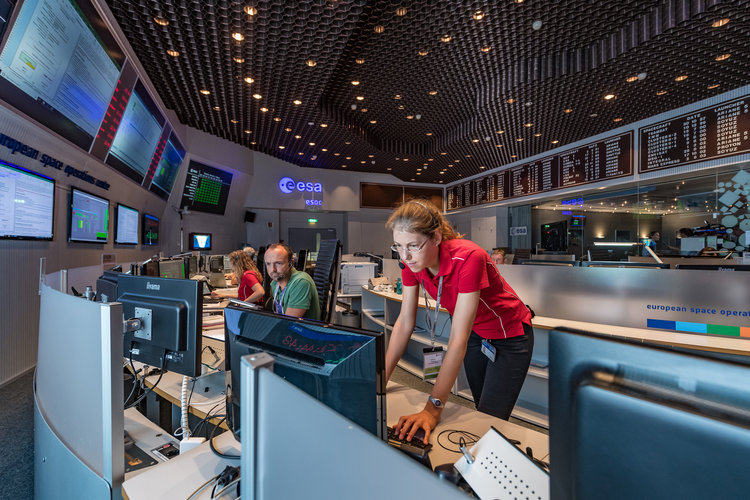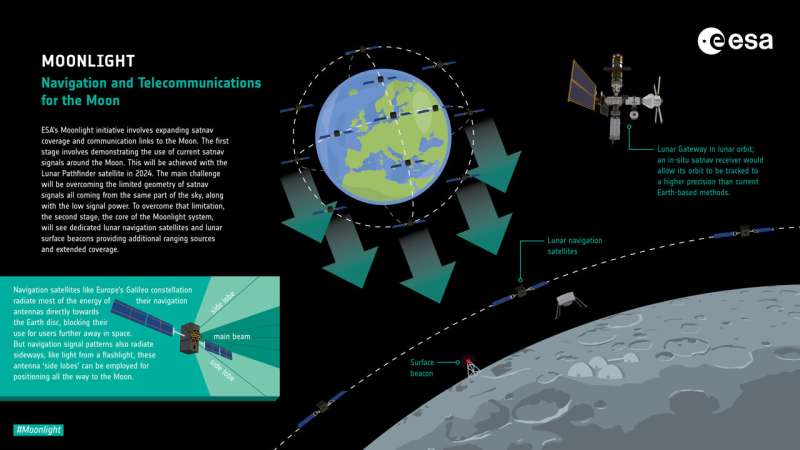
Copernical Team
Tuesday, 28 February 2023 04:35
Nicola Fox named associate administrator for NASA Science Mission Directorate
Washington DC (UPI) Feb 27, 2023
 NASA has found its new associate administrator of the Science Mission Directorate in Heliophysics Director Nicola Fox.
Fox will replace acting administrator Sandra Connelly atop the Science Mission Directorate effective immediately, according to a press release from NASA.
NASA administrator Bill Nelson made the announcement on Monday, lauding Fox for the work she has done as dire
NASA has found its new associate administrator of the Science Mission Directorate in Heliophysics Director Nicola Fox.
Fox will replace acting administrator Sandra Connelly atop the Science Mission Directorate effective immediately, according to a press release from NASA.
NASA administrator Bill Nelson made the announcement on Monday, lauding Fox for the work she has done as dire
 NASA has found its new associate administrator of the Science Mission Directorate in Heliophysics Director Nicola Fox.
Fox will replace acting administrator Sandra Connelly atop the Science Mission Directorate effective immediately, according to a press release from NASA.
NASA administrator Bill Nelson made the announcement on Monday, lauding Fox for the work she has done as dire
NASA has found its new associate administrator of the Science Mission Directorate in Heliophysics Director Nicola Fox.
Fox will replace acting administrator Sandra Connelly atop the Science Mission Directorate effective immediately, according to a press release from NASA.
NASA administrator Bill Nelson made the announcement on Monday, lauding Fox for the work she has done as dire
Published in
News
Tagged under
Tuesday, 28 February 2023 04:35
Public work begins on UK's largest commercial satellite control centre
London, UK (SPX) Feb 28, 2023
 Work has started on Inmarsat's new eight-floor headquarters, which will host the company's Satellite, Network and Cyber Operations Centre and feature advanced workspaces for employees - alongside games areas, a gym, a relaxation area, and a rooftop bar.
The company has been developing plans for the new space since 2019, with the lease at its current headquarters on Old Street Roundabout fi
Work has started on Inmarsat's new eight-floor headquarters, which will host the company's Satellite, Network and Cyber Operations Centre and feature advanced workspaces for employees - alongside games areas, a gym, a relaxation area, and a rooftop bar.
The company has been developing plans for the new space since 2019, with the lease at its current headquarters on Old Street Roundabout fi
 Work has started on Inmarsat's new eight-floor headquarters, which will host the company's Satellite, Network and Cyber Operations Centre and feature advanced workspaces for employees - alongside games areas, a gym, a relaxation area, and a rooftop bar.
The company has been developing plans for the new space since 2019, with the lease at its current headquarters on Old Street Roundabout fi
Work has started on Inmarsat's new eight-floor headquarters, which will host the company's Satellite, Network and Cyber Operations Centre and feature advanced workspaces for employees - alongside games areas, a gym, a relaxation area, and a rooftop bar.
The company has been developing plans for the new space since 2019, with the lease at its current headquarters on Old Street Roundabout fi
Published in
News
Tagged under
Tuesday, 28 February 2023 04:35
Astronomers discover metal-rich galaxies in early universe
Ithaca NY (SPX) Feb 28, 2023
 While analyzing data from the first images of a well-known early galaxy taken by NASA's James Webb Space Telescope (JWST), Cornell University astronomers discovered a companion galaxy previously hidden behind the light of the foreground galaxy - one that surprisingly seems to have already hosted multiple generations of stars despite its young age, estimated at 1.4 billion years old.
"We fo
While analyzing data from the first images of a well-known early galaxy taken by NASA's James Webb Space Telescope (JWST), Cornell University astronomers discovered a companion galaxy previously hidden behind the light of the foreground galaxy - one that surprisingly seems to have already hosted multiple generations of stars despite its young age, estimated at 1.4 billion years old.
"We fo
 While analyzing data from the first images of a well-known early galaxy taken by NASA's James Webb Space Telescope (JWST), Cornell University astronomers discovered a companion galaxy previously hidden behind the light of the foreground galaxy - one that surprisingly seems to have already hosted multiple generations of stars despite its young age, estimated at 1.4 billion years old.
"We fo
While analyzing data from the first images of a well-known early galaxy taken by NASA's James Webb Space Telescope (JWST), Cornell University astronomers discovered a companion galaxy previously hidden behind the light of the foreground galaxy - one that surprisingly seems to have already hosted multiple generations of stars despite its young age, estimated at 1.4 billion years old.
"We fo
Published in
News
Tagged under
Tuesday, 28 February 2023 04:35
UK companies to provide services for future Moon missions
London, UK (SPX) Feb 28, 2023
 The UK Space Agency has announced over 50 million pounds for UK companies to develop communication and navigation services for missions to the Moon.
The new funding is part of the European Space Agency's Moonlight programme, which aims to launch a constellation of satellites into orbit around the Moon, from 2028.
This will allow future astronauts, rovers, science experiments and ot
The UK Space Agency has announced over 50 million pounds for UK companies to develop communication and navigation services for missions to the Moon.
The new funding is part of the European Space Agency's Moonlight programme, which aims to launch a constellation of satellites into orbit around the Moon, from 2028.
This will allow future astronauts, rovers, science experiments and ot
 The UK Space Agency has announced over 50 million pounds for UK companies to develop communication and navigation services for missions to the Moon.
The new funding is part of the European Space Agency's Moonlight programme, which aims to launch a constellation of satellites into orbit around the Moon, from 2028.
This will allow future astronauts, rovers, science experiments and ot
The UK Space Agency has announced over 50 million pounds for UK companies to develop communication and navigation services for missions to the Moon.
The new funding is part of the European Space Agency's Moonlight programme, which aims to launch a constellation of satellites into orbit around the Moon, from 2028.
This will allow future astronauts, rovers, science experiments and ot
Published in
News
Tagged under
Tuesday, 28 February 2023 04:35
Gilmour Space and Atomos Space sign MoU for launch and in-space transfers
Denver CO (SPX) Feb 28, 2023
 Gilmour Space Technologies and Atomos Space have announced the signing of a Memorandum of Understanding (MOU) to explore a multi-year contract for Gilmour and Atomos to mutually purchase services for launch and in-space transportation.
The partnership will see Atomos contract Gilmour for launch services on its Eris and upcoming orbital launch vehicles. In addi
Gilmour Space Technologies and Atomos Space have announced the signing of a Memorandum of Understanding (MOU) to explore a multi-year contract for Gilmour and Atomos to mutually purchase services for launch and in-space transportation.
The partnership will see Atomos contract Gilmour for launch services on its Eris and upcoming orbital launch vehicles. In addi
 Gilmour Space Technologies and Atomos Space have announced the signing of a Memorandum of Understanding (MOU) to explore a multi-year contract for Gilmour and Atomos to mutually purchase services for launch and in-space transportation.
The partnership will see Atomos contract Gilmour for launch services on its Eris and upcoming orbital launch vehicles. In addi
Gilmour Space Technologies and Atomos Space have announced the signing of a Memorandum of Understanding (MOU) to explore a multi-year contract for Gilmour and Atomos to mutually purchase services for launch and in-space transportation.
The partnership will see Atomos contract Gilmour for launch services on its Eris and upcoming orbital launch vehicles. In addi
Published in
News
Tagged under
Tuesday, 28 February 2023 04:35
Commercial Space: NASA Has an App for That
Greenbelt MD (SPX) Feb 28, 2023
 Research balloons, satellites, and planetary landers may have little in common, but NASA has written a program that can help operate all these craft and more. This open-source software framework, called core Flight System (cFS), is similar to a smartphone operating system in that it serves as the foundation for apps developed to perform spaceflight functions. Now, Red Canyon Software Inc. is bui
Research balloons, satellites, and planetary landers may have little in common, but NASA has written a program that can help operate all these craft and more. This open-source software framework, called core Flight System (cFS), is similar to a smartphone operating system in that it serves as the foundation for apps developed to perform spaceflight functions. Now, Red Canyon Software Inc. is bui
 Research balloons, satellites, and planetary landers may have little in common, but NASA has written a program that can help operate all these craft and more. This open-source software framework, called core Flight System (cFS), is similar to a smartphone operating system in that it serves as the foundation for apps developed to perform spaceflight functions. Now, Red Canyon Software Inc. is bui
Research balloons, satellites, and planetary landers may have little in common, but NASA has written a program that can help operate all these craft and more. This open-source software framework, called core Flight System (cFS), is similar to a smartphone operating system in that it serves as the foundation for apps developed to perform spaceflight functions. Now, Red Canyon Software Inc. is bui
Published in
News
Tagged under
Monday, 27 February 2023 10:34
Space helps everyone stay connected

Keeping connected always to everyone and everything whether in remote areas or travelling by car, boat or plane is crucial in today’s digital world.
Published in
News
Tagged under
Monday, 27 February 2023 12:30
Aurora over Wales
 Image:
Aurora over Wales
Image:
Aurora over Wales
Published in
News
Tagged under
Monday, 27 February 2023 14:00
#SocialSpace: Apply to join Juice launch at ESA mission control

Published in
News
Tagged under

